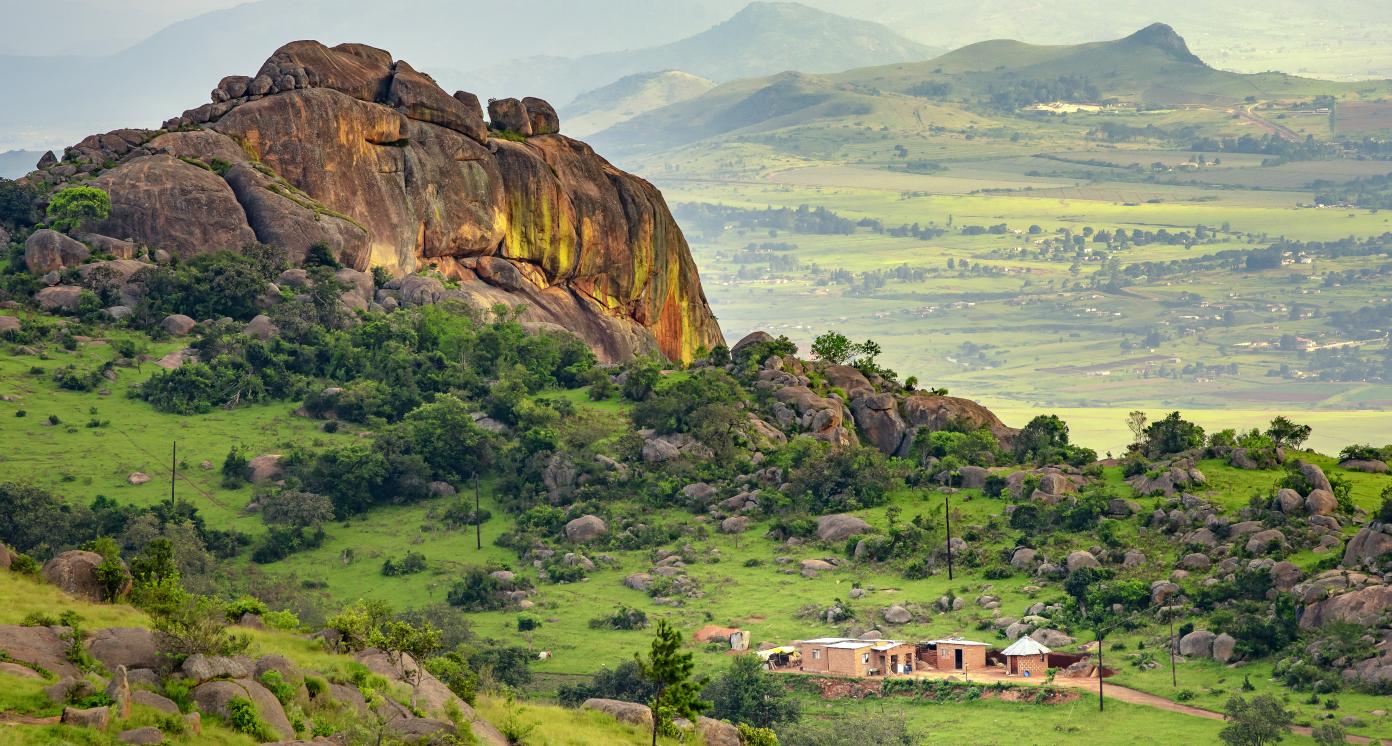Eswatini is a landlocked country in Southern Africa bordering South Africa and Mozambique, with a population of 1.2 million. Poverty levels have stagnated at high levels in the last five years, with 39.7% of the population estimated to have been living under the international $1.90 poverty line in 2016 and 2017. Eswatini has close economic ties to South Africa, which it depends on for about 85% of its imports and about 60% of exports. Eswatini is a member of the Common Monetary Area (CMA), with Lesotho, Namibia, and South Africa. Under the CMA, the Eswatini lilangeni (the domestic currency) is pegged to the South African rand, which is also legal tender in the country.
The country’s economy rebounded in 2021, despite the continued COVID-19 pandemic and the June 2021 political unrest. Real GDP growth is estimated at 2.1 percent in 2021 rising from a 1.9 percent contraction in 2020. The third and fourth COVID-19 wave containment measures were not as restrictive as those of earlier waves, allowing firms to ramp up production in 2021 Q4. Economic growth is projected to continue recovering in 2022. Real GDP growth is projected at 2 percent in 2022 and to 1.8 percent in 2023, reflecting the implementation of the government’s three-year fiscal adjustment program. Economic growth will be supported by growth in agriculture and continued recovery in manufacturing and wholesale and retail trade.
The Russia-Ukraine war contributed to rising oil and food prices, hurting the poor most. Already, poverty, unemployment, inequality, and HIV prevalence levels have historically been high. Progress toward reducing poverty has been slow, with close to a third of the population living below the US$1.90/day (2011 PPP) international poverty line. At about 27 percent, Eswatini has the world’s highest HIV prevalence rate among adults aged 15 to 49, a driver and consequence of high poverty and inequality. In a context of historically persistent and high poverty and inequality, the COVID-19 pandemic presents the risk of reversing the modest gains that have been made. 58.9% of Emaswati lived below the national poverty line in 2017, following a decline from 63% in 2009, and 69.0% in 2001. The $1.90/person/day (2011 purchasing power parity (PPP)) international poverty rate has hovered around 30% since 2016, estimated at 28.5% in 2021. This, together with high inequality levels – with a consumption per capita Gini index of 54.6 in 2017 – increases vulnerability to economic shocks.
Private investment has been low, constrained by, among other factors, heavy state involvement in the economy, lack of transparency due to governance challenges (further exposed by the political unrest that happened in June 2021), and a generally weak business environment. The fiscal situation has been fragile due to overreliance on volatile Southern African Customs Union (SACU) revenues, which translates into significant fluctuations in public spending and pose a challenge to the management of fiscal operations and growth potential.
14



Food and Beverage, Renewable Resources and Alternative Energy, Infrastructure
0.611
How is this information gathered?
SDG Investor Maps employ an 8-step methodology, combining data research and stakeholder consultations to identify Investment Opportunity Areas (IOAs) and potential business models with significant financial and impact potential.
Disclaimer
UNDP, the Private Finance for the SDGs, and their affiliates (collectively “UNDP”) do not seek or solicit investment for programmes, projects, or opportunities described on this site (collectively “Programmes”) or any other Programmes, and nothing on this page should constitute a solicitation for investment. The actors listed on this site are not partners of UNDP, and their inclusion should not be construed as an endorsement or recommendation by UNDP for any relationship or investment.
The descriptions on this page are provided for informational purposes only. Only companies and enterprises that appear under the case study tab have been validated and vetted through UNDP programmes such as the Growth Stage Impact Ventures (GSIV), Business Call to Action (BCtA), or through other UN agencies. Even then, under no circumstances should their appearance on this website be construed as an endorsement for any relationship or investment. UNDP assumes no liability for investment losses directly or indirectly resulting from recommendations made, implied, or inferred by its research. Likewise, UNDP assumes no claim to investment gains directly or indirectly resulting from trading profits, investment management, or advisory fees obtained by following investment recommendations made, implied, or inferred by its research.
Investment involves risk, and all investments should be made with the supervision of a professional investment manager or advisor. The materials on the website are not an offer to sell or a solicitation of an offer to buy any investment, security, or commodity, nor shall any security be offered or sold to any person, in any jurisdiction in which such offer would be unlawful under the securities laws of such jurisdiction.



















